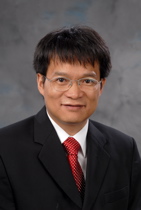
Xiuren Zhang of Texas A&M University will discuss his research on how micro ribonucleic acid molecules suppressed genes in Arbidopsis, a common weed related to cabbage. "RNA Silencing Effectors in Arabidopsis," will be presented at 4 p.m., Oct. 22 in E103 Beadle Center. The seminar is free and open to the public.
Multi-cellular eukaryotes establish certain populations of pluripotent stem cells. The stem cells divide for self-renewing, and they also form differentiated cell lineages at the appropriate timing and in the appropriate place. One of Zhang's long-term goals is to understand how maintenance and differentiation of plant stem cell is influenced by AGO/microRNA (miRNA)-mediated RNA silencing.
As central components of RNA-induced silencing complexes, AGO proteins recruit miRNAs to regulate target genes at transcriptional or post-transcriptional levels. The Arabidopsis genome encodes 10 AGO genes, among which AGO1 is a principal slicer in RNA silencing pathways. AGO10, the closest paralog of AGO1, plays a critical role in stem cell development and differentiation. Whereas AGOs were previously thought to exclusively repress miRNA target genes, Zhang and his team recently discovered that AGO10 specifically, and almost exclusively, sequesters a single miRNA class, miR166/165, to preclude them from functioning in the canonical AGO1-mediated pathway for inhibition of gene expression.
Although these paradigm-shifting findings solved a long-term mystery underlying AGO10 function, they also raised several new intriguing issues (i.e. how is AGO10-centered complex is assembled; and how does it trigger miRNA decoy and decay?). Zhang will discuss recent progress in answering these fundamental questions. Addressing these significant issues will elucidate novel functions and mechanisms of AGO proteins in all eukaryotic organisms.
The Beadle Center is located at 1901 Vine Street. The complete schedule of seminars may be found at http://biotech.unl.edu/.